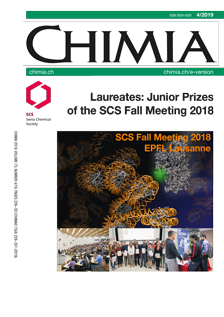Analytical Approaches for Monitoring DNA–Protein Interactions
DOI:
https://doi.org/10.2533/chimia.2019.283PMID:
30975257Keywords:
Biosensor, Carbon nanotube, Dna–protein interaction, PhotoluminescenceAbstract
DNA–protein interactions play a critical role in cellular regulation. We herein review existing analytical methods for investigating these interactions, highlighting methods such as chromatin immunoprecipitation and yeast-one-hybrid that are used to identify undiscovered DNA–protein interactions. We summarize the most common approaches for characterizing known interactions based on DNA–protein structure, thermodynamic and kinetic measurements, and dynamic binding assays. We discuss techniques in optical imaging as well as representative methods, such as eletrophoretic mobility shift assay and surface plasmon resonance. The advantages and disadvantages of these techniques are used to assess a proposed optical platform based on single-walled carbon nanotube (SWCNT) fluorescence.Downloads
Published
2019-04-24
Issue
Section
Scientific Articles
License
Copyright (c) 2019 Swiss Chemical Society

This work is licensed under a Creative Commons Attribution-NonCommercial 4.0 International License.
How to Cite
[1]
Chimia 2019, 73, 283, DOI: 10.2533/chimia.2019.283.







